Rachel Whiteread’s first permanent site-specific public commission in the US is now on show on Governors Island in New York Harbor. In the weeks since its unveiling, thousands of New Yorkers and visitors have taken the ferry ride from downtown Manhattan or Brooklyn to the island and strolled up the newly created Discovery Hill to ponder on her work, called Cabin, and enjoy its stunning backdrop. (Whiteread’s ground-breaking Water Tower of 1998, which perched on a Manhattan rooftop, is now part of the Museum of Modern Art’s collection, on view this summer in their Rockefeller Sculpture Garden.)
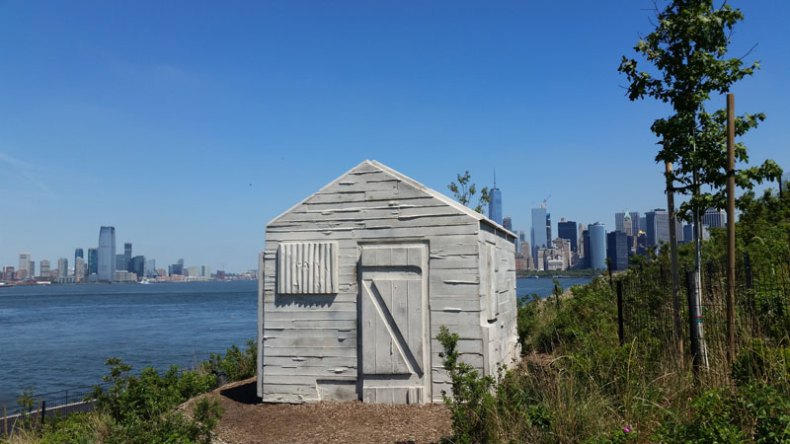
Cabin (2016), Rachel Whiteread
Whiteread takes her inspiration from the American philosopher Henry David Thoreau (1817–62) – something of a Renaissance man who was also an essayist, poet, naturalist, abolitionist, tax resister, transcendentalist, promoter of civil disobedience, and more, and would influence both Mahatma Gandhi and Martin Luther King. Her Cabin is a concrete cast of a New England-style wooden shed of the kind Thoreau retreated to. Whiteread hopes her better-read visitors will remember Thoreau’s Walden (1854), a reflection on the merits of simple living in natural surroundings that described his two years, two months and two days spent living in just such a cabin, which he built by Walden Pond in Massachusetts state. In particular, Whiteread hopes people encountering her Cabin will pause in this beautiful spot outside the hubbub of the city and remember the chapter in Walden on solitude, where the Thoreau eulogises nature and his waterside location: ‘This is a delicious evening, when the whole body is one sense, and imbibes delight through every pore. I go and come with a strange liberty in Nature, a part of herself’.
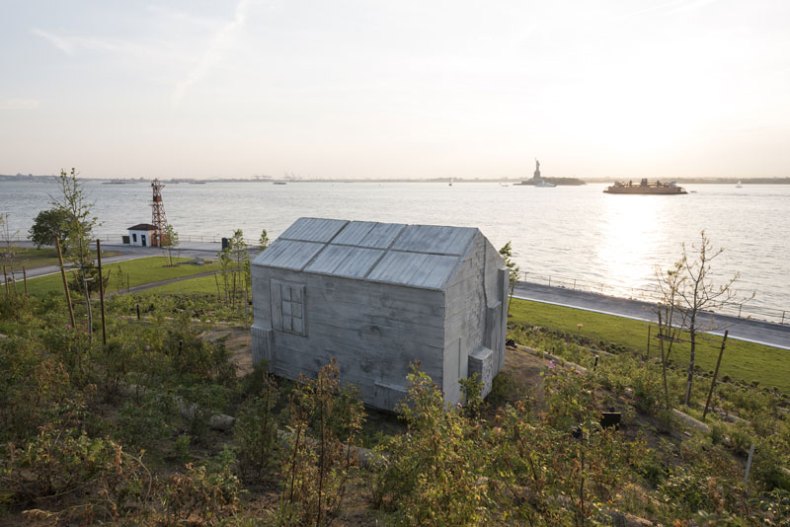
Cabin (2016), Rachel Whiteread, on Discovery Hill, Governors Island. Photo: Tim Schenck.
Whether or not one recognises Whiteread’s references for Cabin (there is a handy explanatory plaque nearby), it looks splendid perched in isolation on its hillside. This hill is one of four spread over 10 acres and called, aptly, The Hills. They are the latest addition to the revived Governors Island, which was transformed under Michael Bloomberg’s mayoralty from a forgotten mess of historic and military buildings into a new summertime retreat for the city, a sort of giant playground mixing nature and art – its shape just happens to be like an ice-cream cone.
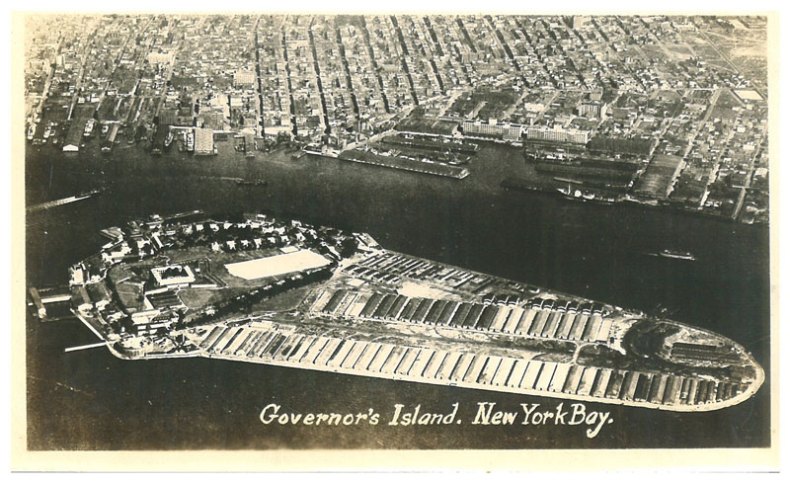
Historic postcard of Governors Island during the First World War era. Dozens of warehouses on the southern part of the Island were used for the war effort. The southern part of the Island is today home to the park and Hills, designed by West 8.
Visitors can spread out over the 172-acre island, most of it now publicly accessible. They come to relax on wooden loungers, daydream on red-string hammocks, and stroll along the island-encircling two-mile-long promenade. They rent bikes to ride among some 3,000 trees planted over the past four years, and picnic on splendid abstract seating composed of reused giant granite stones from the former sea wall, each one a bold and ingenious sort of sculpture.
Restored former military buildings are given to artists for residences; they show their work and run public projects, mostly at the weekends. Art shows abound, again mostly open at weekends: almost two dozen shows this year include a mixed one by Brooklyn’s A.I.R. gallery, the Sculptors Guild’s ‘American Twist’, and Brad Farwell’s Sky Cannon (2015) which uses the civil war era canons to play with reflections of light and sky (all until 25 September). At Soissons Landing there is a retrospective of the work of Michael Richards (1963–2001), a promising artist who died in the 9/11 attacks. New Yorkers also enjoy organised activities: events on the programme this summer included a kayak day, unicycle festival and vintage baseball games.
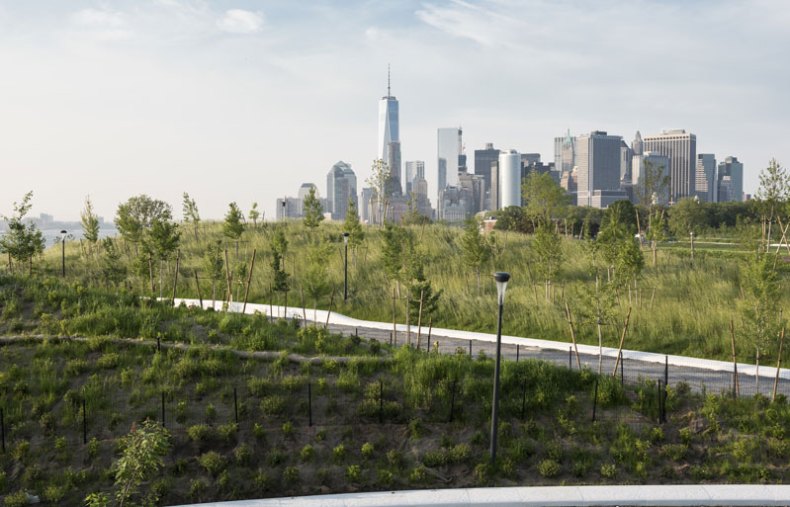
View of Freedom Tower and downtown Manhattan from The Hills. Photo: Tim Schenck.
Behind the transformation of Governors Island are West 8, an urban design and landscape architecture firm founded in Rotterdam in 1987. After winning the project in 2007, the team led by Adriaan Geuze and his New York partner Jamie Maslyn Larson formed a masterplan. Bit by bit, it is being realised. For The Hills they have transformed a flat parking lot and some disused buildings into four hills of different heights and character, adding demolition debris into the mix and then covering them with some 40,000 shrubs and several hundred trees. The tallest hill is the Outlook Hill, at 70 ft, with magnificent 360-degree views of Brooklyn, Manhattan, the Hudson River, Ellis Island where so many New Yorkers’ antecedents arrived and, of course, the Statue of Liberty and all it symbolises. The arrival of Whiteread’s Cabin is a timely complement.
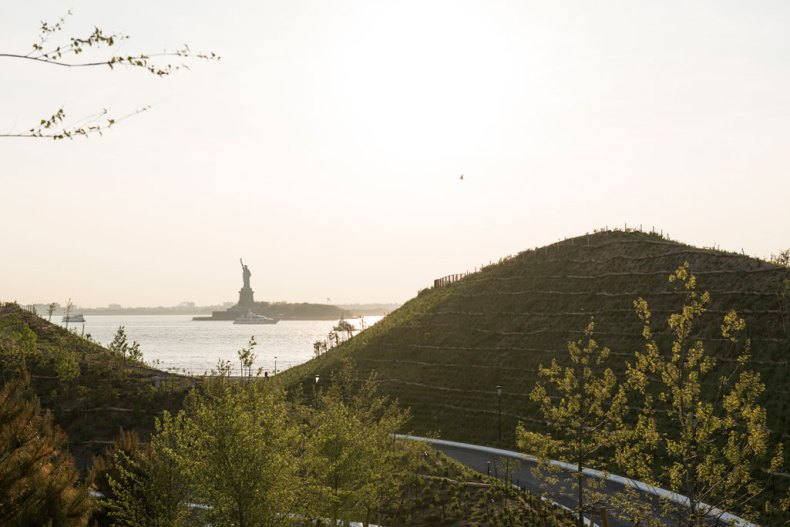
Liberty Monument, from the top of Slide Hill on Governors Island. Photo: Tim Schenck.
This year’s Governors Island programme runs until 25 September.
Unlimited access from just $16 every 3 months
Subscribe to get unlimited and exclusive access to the top art stories, interviews and exhibition reviews.

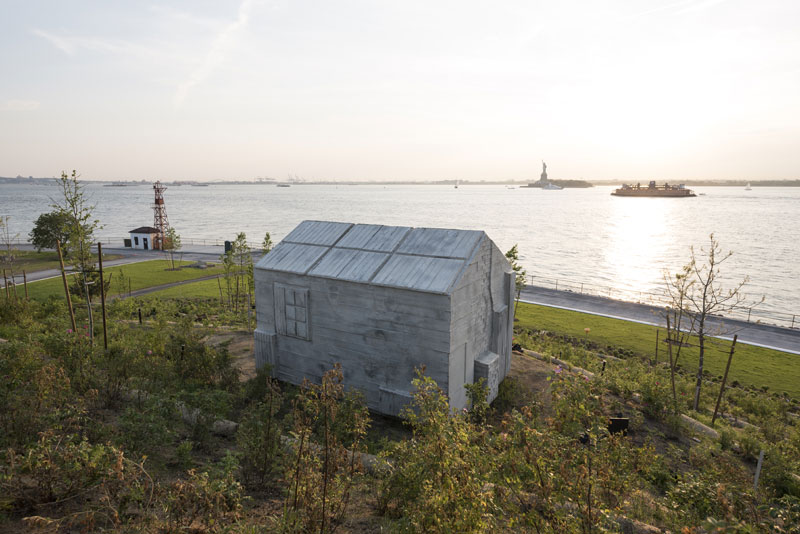
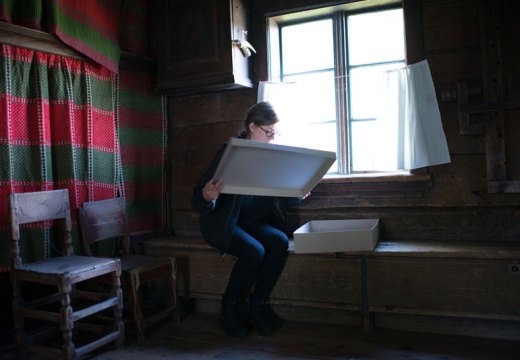
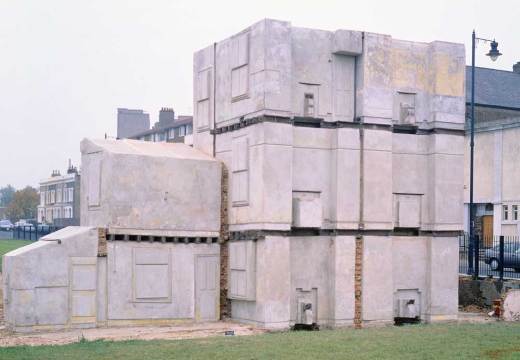
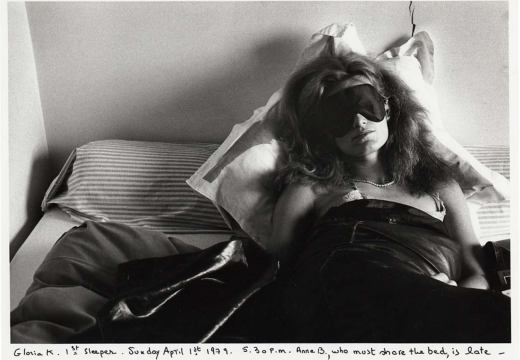









![Masterpiece [Re]discovery 2022. Photo: Ben Fisher Photography, courtesy of Masterpiece London](http://www.apollo-magazine.com/wp-content/uploads/2022/07/MPL2022_4263.jpg)
Has the Fitzwilliam lost the hang of things?